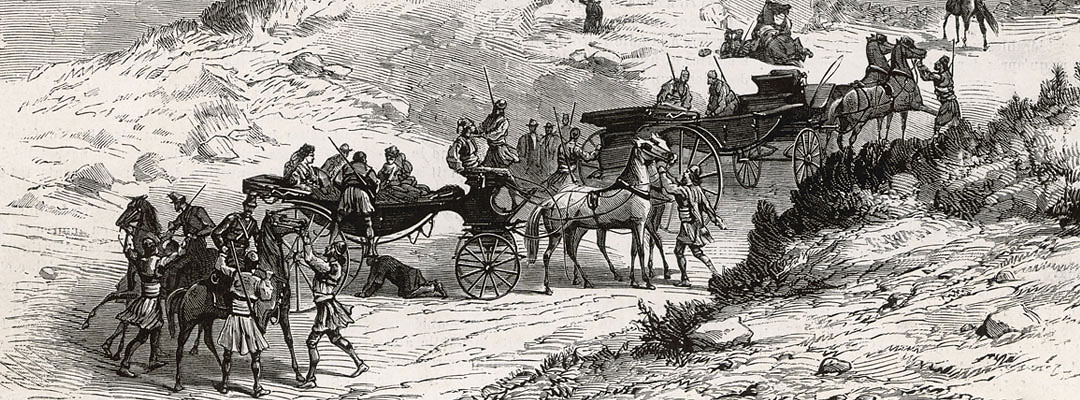The Dilessi Massacre and a Gothic Revival Masterpiece
How the death of a young English aristocrat taken hostage in Greece inspired the building of St Mary’s Church, Studley Royal.

TRANQUIL ESTATE
Built in the 1870s by renowned architect William Burges, the church of St Mary lies within the beautiful setting of the Studley Royal estate in Yorkshire, juxtaposed with the ruins of Fountains Abbey. But the impetus to create a church in such tranquil surroundings resulted from a violent death far away.
The Studley Royal estate was then owned by George Robinson, Earl de Grey, and his wife, Henrietta, whose widowed mother, Lady Mary Vyner, lived at neighbouring Newby Hall. Earl de Grey (from 1871 the 1st Marquess of Ripon) was a prominent Liberal politician and a member of Gladstone’s government. He later became Viceroy of India.
HELD TO RANSOM
In April 1870 Henrietta’s youngest brother, Frederick, 23 years old and touring through Europe, arrived in Athens. He rose early on Monday 11 April to join a group of six other British tourists and an Italian on a day trip to the site of the Battle of Marathon, some 25 miles away.
But on their way back through the mountains, a stroke of bad luck led them into the hands of a notorious band of brigands, who abducted five of them, including Vyner. They demanded a ransom of one million drachma (£32,000 – then an enormous sum) for the hostages’ release.
MASSACRE
Tourists had been captured before in Greece, but such incidents had been concluded peacefully on payment of a ransom.
At first it seemed as though this case would be no different. The hostages were treated considerately. Vyner, the youngest, ran races and tossed boulders with his captors. One of the hostages, Lord Muncaster, was released, and despatched to Athens to raise the ransom money.
But things then went terribly wrong. As well as the ransom the brigands demanded an amnesty, which the Greek government refused to countenance. Troops surrounded the place where the hostages were being held, and the brigands panicked. In the confusion that followed, one by one Frederick Vyner and his companions were shot dead.
INTERNATIONAL INCIDENT
The incident, which became known as the Dilessi Massacre, was reported in newspapers across Europe, and caused a sensation in Britain. Emotional speeches were made in Parliament and Queen Victoria herself spoke out against the Greek government. She saw Lord de Grey shortly afterwards, and recorded in her journal that he was ‘extremely low, & evidently much shaken by the death of his poor brother-in-law’.
MEMORIAL
It was to commemorate Frederick’s death that Lady Mary Vyner and the de Greys decided to put the money they had set aside to pay the ransom towards building two churches on their lands: Christ the Consoler, near Newby Hall, and St Mary’s, Studley Royal.
Both churches were designed by Burges, a leading figure of the Gothic Revival. St Mary’s interior remains exceptionally intact, and embodies many of the most significant religious and architectural ideals of the age.
By Katy Carter